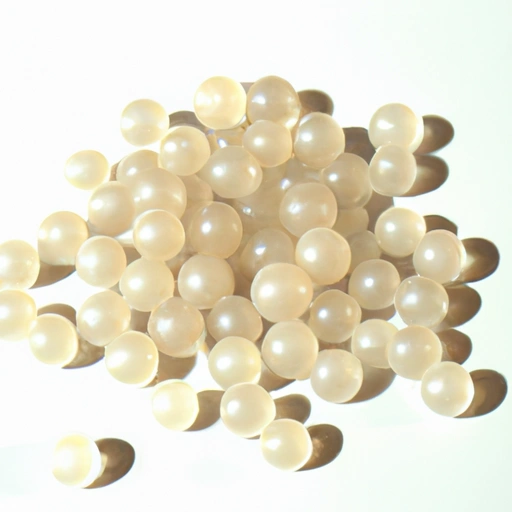Tapioca Pearl
Description

Tapioca pearls are a versatile food ingredient derived from the cassava root. They are commonly known for their glistening appearance and chewy texture when cooked, often used in a variety of sweet and savory dishes around the world. These pearls come in various sizes, ranging from small to large, and are also referred to as boba in certain cultures, especially when used in bubble tea beverages.
In culinary practices, tapioca pearls are measured in both metric and imperial/American units. For instance, they might be called for in recipes by the gram or ounce, and liquid measures could be in milliliters or cups.
Common uses
Tapioca pearls are most commonly used in sweets and desserts, particularly in puddings and as a thickener in pies. They are also a key ingredient in bubble tea, a popular Taiwanese beverage that has gained enormous popularity across the globe. In savory dishes, small-sized tapioca pearls may be used to provide a thick and creamy texture to soups and stews.
Nutritional value
Calories
Tapioca pearls typically contain about 100 calories per 28 grams (1 ounce).
Protein
They provide minimal protein, with less than 1 gram per serving.
Fat
Tapioca pearls are essentially fat-free, with virtually no fat content in a standard serving.
Carbohydrates
They are high in carbohydrates, with around 25 grams per 28 grams (1 ounce) serving, primarily in the form of starch.
Vitamins
Tapioca pearls contain minimal amounts of vitamins.
Minerals
They offer negligible mineral content, with trace amounts of calcium and iron depending on the brand.
Health benefits
While not nutrient-dense, tapioca pearls can provide quick energy due to their high starch content. Consumed in moderation, they can be part of a balanced diet, especially for those who require gluten-free options.
Potential risks
Excessive consumption of tapioca pearls can lead to weight gain due to their high carbohydrate content. They should be consumed in moderation, especially by individuals with diabetes or those watching their blood sugar levels, as they can cause spikes in blood sugar. Additionally, as tapioca is a refined product, it lacks the fiber found in whole grains.
Common recipes
Tapioca pearls are used in recipes such as bubble tea, tapioca pudding, and Brazilian cheese bread (pão de queijo). They are also used as a thickening agent in fruit pies, soups, and gravies.
Cooking methods
The pearls are usually soaked in water and then cooked in boiling liquid until they become translucent and gelatinous. The cooking time varies depending on the size of the pearls.
Pairing with other ingredients
Tapioca pearls pair well with milk and coconut-based desserts, as well as with fresh fruit, especially mango and lychee. In savory dishes, they complement light broths and cream-based soups.
Summary
Tapioca pearls are a gluten-free starch extracted from the cassava root. They are widely used in a range of dishes, from sweet to savory, and are best known for their role in bubble tea. While tapioca pearls are low in protein, fat, and nutrients, they offer an energy boost and serve as an excellent thickening agent. When used in moderation, they can be included in a balanced diet with an awareness of their high carbohydrate content.